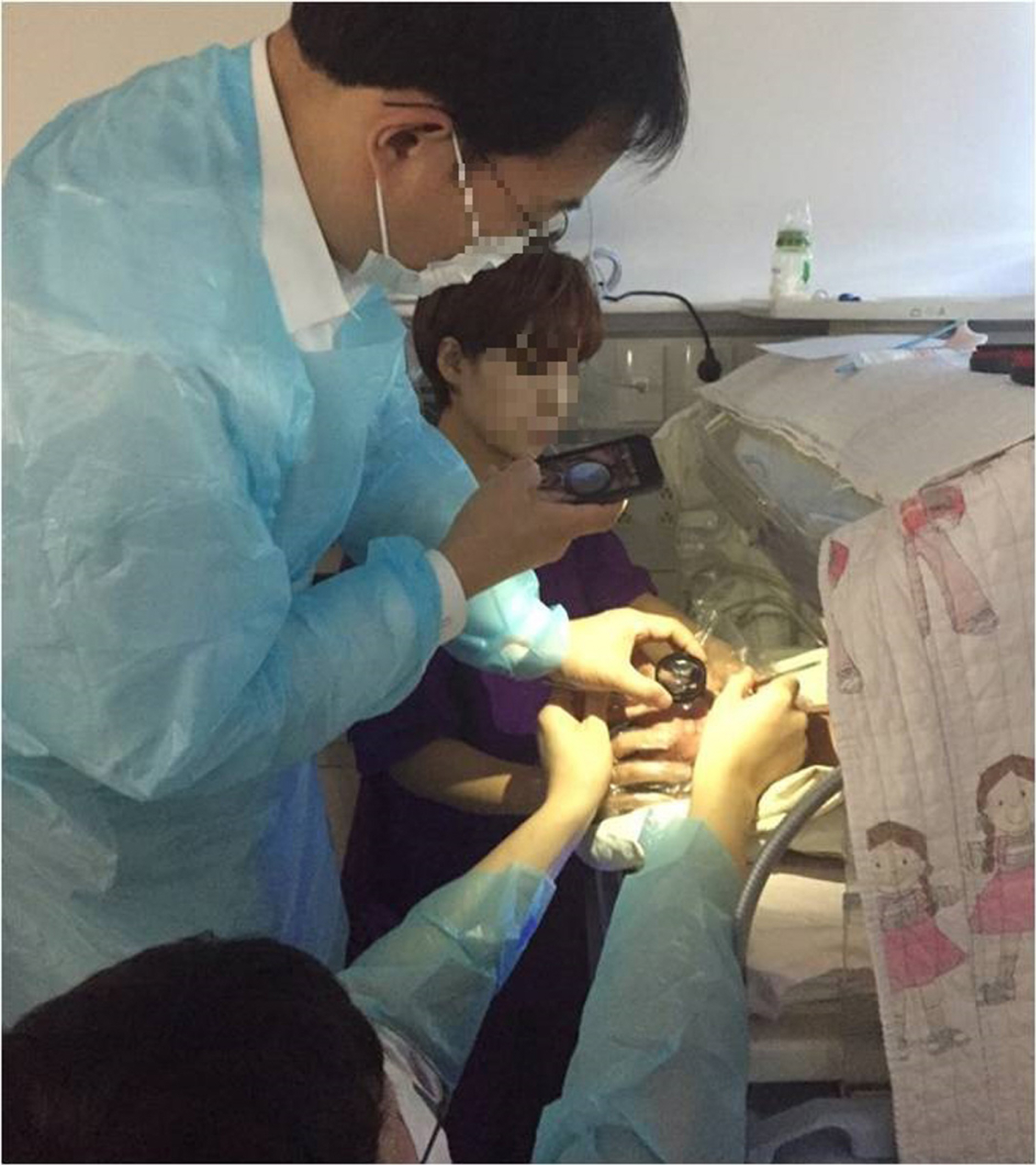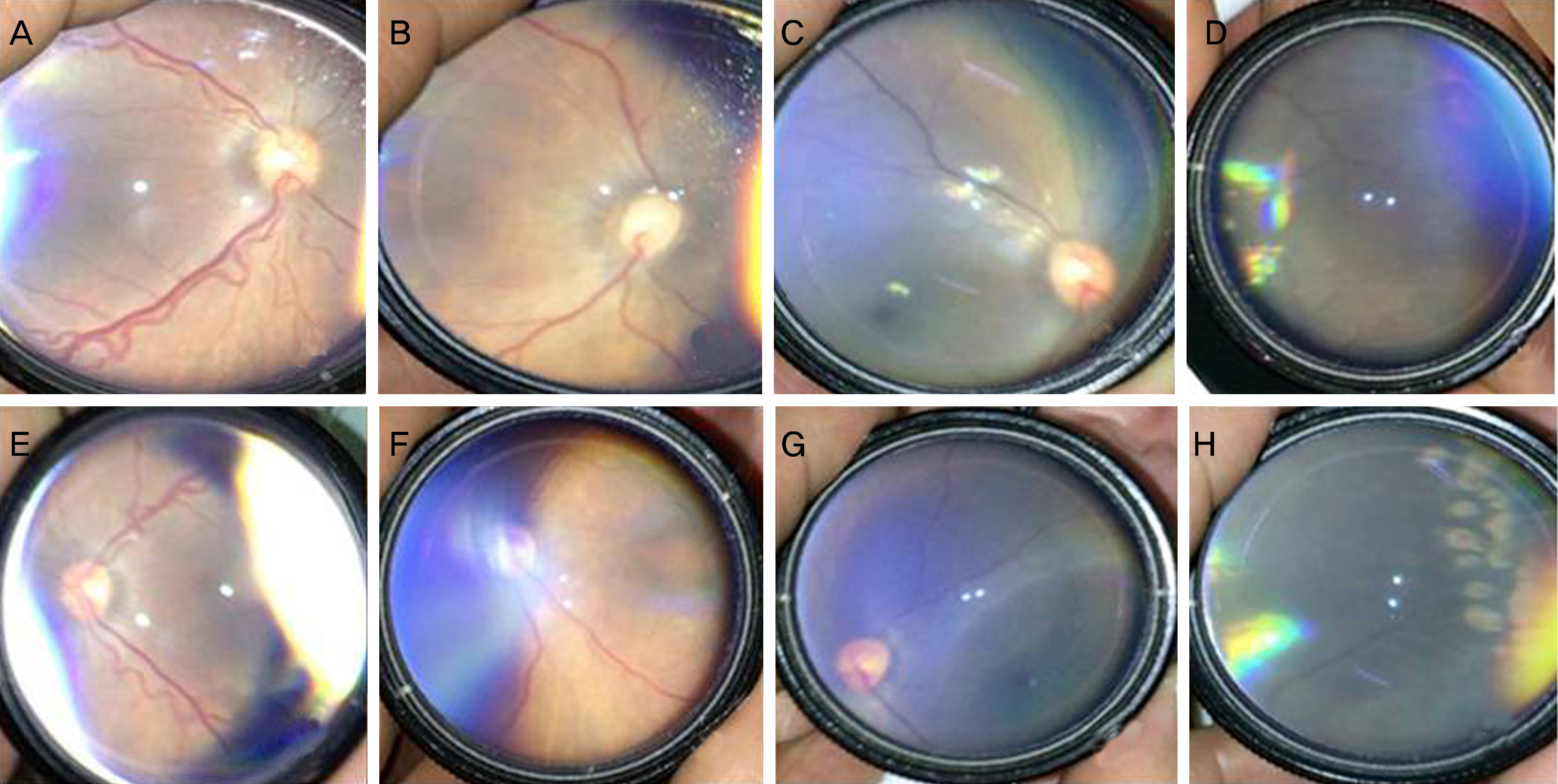J Korean Ophthalmol Soc.
2018 Jan;59(1):31-36. 10.3341/jkos.2018.59.1.31.
Smartphone Fundoscopy to Detect Retinopathy of Prematurity
- Affiliations
-
- 1Department of Ophthalmology, Dong-A University College of Medicine, Busan, Korea. yhkwon@dau.ac.kr
- KMID: 2401675
- DOI: http://doi.org/10.3341/jkos.2018.59.1.31
Abstract
- PURPOSE
To evaluate the usefulness of fundus images captured with a smartphone camera in retinopathy of prematurity (ROP).
METHODS
We took fundoscopic photographs of 13 premature infants (26 eyes) using a smartphone (an I-phone 5) camera fitted with a 30 D lens (Volk Optical Inc., Mentor, OH, USA) from March 2014 to September 2017 in the neonatal intensive care units of Dong-A University Hospital. A hand-held smartphone camera with a 30 D lens was used to record the fundus in video mode. Fundus photographs were then captured from the video film.
RESULTS
Four premature infants were diagnosed with ROP and were successfully photographed via smartphone fundoscopy. The photographs showed the optic disc, retinal arteries and veins, and the posterior pole of the retina. The photographs were simply saved as image files and uploaded to our electronic medical record system.
CONCLUSIONS
Smartphone fundoscopy to document ROP does not capture the peripheral retina but can be useful in hospitals lacking expensive imaging equipment. The technique may be useful in terms of documentation, education, and telemedicine.
MeSH Terms
Figure
Reference
-
References
1. Lord RK, Shah VA, San Filippo AN, Krishna R. Novel uses of smartphones in ophthalmology. Ophthalmol. 2010; 117:1274.
Article2. Zvornicanin E, Zvornicanin J, Hadziefendic B. The use of smart phones in ophthalmol. Acta Inform Med. 2014; 22:206–9.3. Good WV; Early Treatment for Retinopathy of Prematurity Cooperative Group. Final results of the Early Treatment for Retinopathy of Prematurity (ETROP) randomized trial. Trans Am Ophthalmol Soc. 2004; 102:233–48. discussion 248–50.4. Ells AL, Holmes JM, Astle WF, et al. Telemedicine approach to screening for severe retinopathy of prematurity: a pilot study. Ophthalmol. 2003; 110:2113–7.5. Oluleye TS, Rotimi-Samuel A, Adenekan A. Mobile phone for abdominal of prematurity screening in Lagos, Nigeria, sub-Saharan Africa. Eur J Ophthalmol. 2016; 26:92–4.6. Yoon HS. Statisticcs and medical cost of preterm in Korea. Hanyang Medical Reviews. 2009; 29:386–90.7. Haddock LJ, Kim DY, Mukai S. Simple, expensive techinique for high-quality smartphone fundus photography in human and animal eyes. J Ophthalmol. 2013; 2013:518479.8. Kim DY, Delori F, Mukai S. Smartphone photography safety. Ophthalmology. 2012; 119:2200–1. author reply 2201.
Article
- Full Text Links
- Actions
-
Cited
- CITED
-
- Close
- Share
- Similar articles
-
- Effect of Cryotherapy for Retinopathy of Prematurity
- Letter to the Editor: Effect of Intravitreal Bevacizumab Injection on Retinopathy of Prematurity
- The Effect of Cryotherapy and Laser Photocoagulation for the Retinopathy of Prematurity
- Cryotherapy for Retinopathy of Prematurity: Six Years' Experience
- Quantification of Vascular Tortuosity by Analyzing Smartphone Fundus Photographs in Patients with Retinopathy of Prematurity






